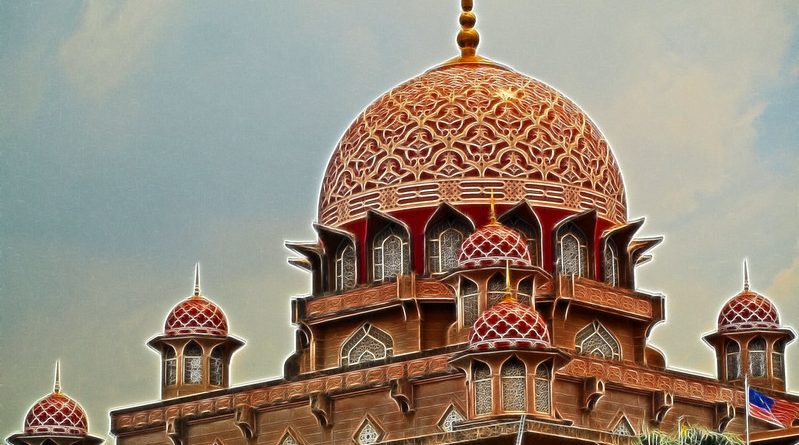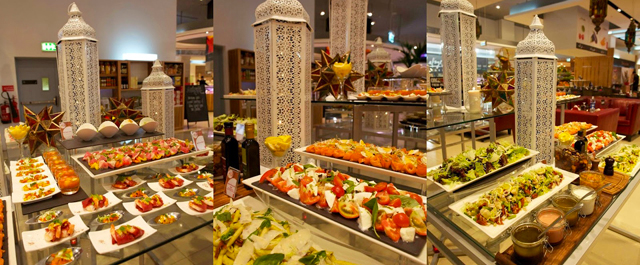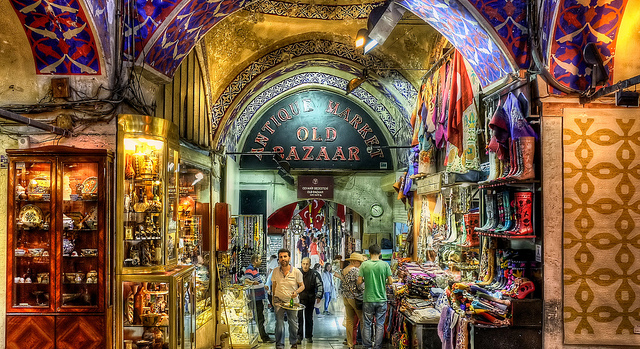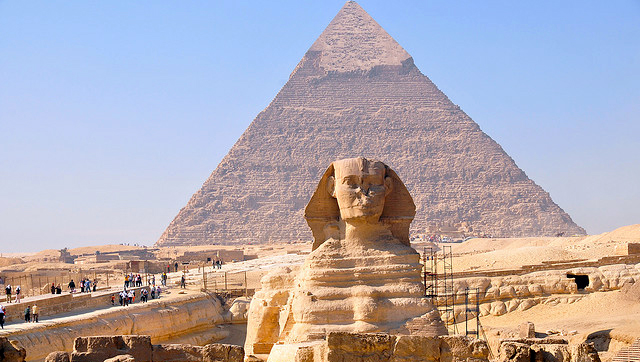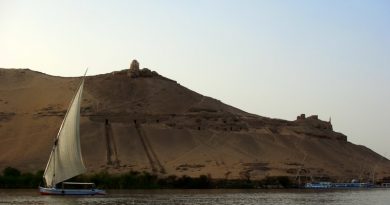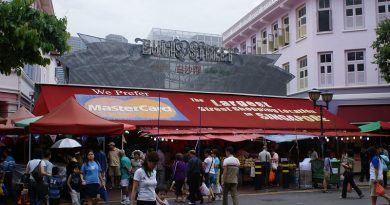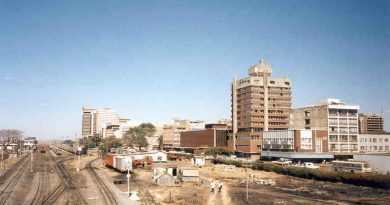Top Places to Visit During Ramadan
Ramadhan Mubarak!
The Islamic month of Ramadan (sometimes spelt Ramadhan) runs until the end of July this year and is a spiritual time for those who are fasting. But what does this mean for travellers and non-Muslim tourists who wish to visit a Muslim-majority country during this important religious festival?
Unlike some festivals which can be sombre and we would advise against travelling during these months (Muhurram for instance), Ramadhan is a joyous occasion where normal daily life completely changes and visitors to these regions are in for a serious culinary treat! Ramadhan means that practising Muslims fast between sunrise and sunset, every day for a month. They abstain from food and water during the daytime and concentrate on spiritual renewal. Charity, acts of kindness and generosity are all part of the spirit of Ramadhan so you may be invited – more than once – to break the fast in the evening with a local!
Normal daily pace of life slows down and a lot of shops and businesses remain closed during the heat of the day. When sunset finally arrives and the call of the muezzin lures the inhabitants to prayer, the city will transform into a riot of colours, smells and celebration. Depending on the country you are in, there will be a whole array of festivities and events centred around the time of breaking fast (known as Iftar).
However, Ramadan isn’t about daytime discipline and nightly parties so you need to adjust your travel plans accordingly and remember some rules of etiquette when visiting a Muslim country. Make sure you plan ahead for any excursions you are thinking of taking – check with the hotel you are staying with and call ahead to verify local monuments and places of interest operate within the normal hours. You may find some sites are closed or open later in the evening.
Don’t expect to be able to find cafes serving food during the day – hotels will continue to operate as normal so be a little more patient and carry a packed lunch for longer day trip and be sensitive towards the locals who are fasting. Do not eat and drink in public – it’s considered bad manners and you will attract a fair few frowns!
We’ve rounded up our top destinations to consider when planning your trip during the month of Ramadan. So enjoy and don’t forget to wish everyone a very happy Ramadan (Ramadan Mubarak!) and hope that their prayers and wishes are accepted (Ramadan Kareem!)
1. Dubai, United Arab Emirates
Dubai is a tourist hotspot all year round, but during the month of Ramadhan, Dubai is even more enchanting. In addition to the tourist amenities that Dubai offers on a regular basis, visitors during Ramadhan can participate in events organized by the local government, aimed at educating and reminding the public of the meaning and importance of the Holy time. Iftar is announced in Dubai by the sounding of cannons. Hotels often construct Ramadhan Majlis (Arabic tents) decorated with ornate cushions and Persian carpets in which to celebrate the Iftar meal every evening. The meal includes a variety of cuisines reflecting Arabic culture. These meals are typically held after the sundown prayers have taken place, when the celebration really begins. Dubai possibly offers more services for non-fasters than other destinations.
Special Food to try:
Harees – local delicacy of shredded lamb and boiled wheat that is crushed together in a wooden press.
2. Istanbul, Turkey
The ancient city of Istanbul was the capital of Islamic culture during the Ottoman Empire and stays true to its roots through its festive celebrations of Ramadhan. The local governments subsidise the construction of Iftar tents in which fasters and non-fasters can come together to celebrate and at night the city’s public spaces become filled with spiritual celebration; public readings of the Qu’ran occur and markets open with stalls and vendors selling traditional snacks and religious books and ornaments. Street performances of shadow puppets and traditional folk dances commence. Furthermore, Ramadhan is an ideal time to visit Istanbul’s famous Blue Mosque to learn about and experience the Muslim faith.
Special Foods to try (There are so many specialities to be had in Istanbul – here are some favourites)
Kahvaltı – Traditional Turkish breakfast
Sucuk – a dry, spicy beef sausage
Yufka – flatbread
Kavurma – a lamb casserole
Simit – Bread studded with sesame seeds
Türk kahvesi
Lahmacun – Turkish Pizza
Durum – Turkish doner kebab but not as you know it!
Fasulye beans
Içli köfte – delicious, promise!
Bal (honey) with Turkish yoghurt.
Fırın Sütlaç – baked rice pudding
Künefe – Crisp golden outer edges and base, softer pastry inside drenched in syrup (or honey) coupled with melted salty cheese at the centre, and topped with pistachios.
3. Kuala Lumpur, Malaysia
Ramadhan in Malaysia is particularly known for its special food markets and bazaars that sell a wide variety of traditional snacks, delicacies and desserts, many of them unique to Malaysia as a result of the nation’s cultural diversity. Locals frequent the markets, making them a great place for tourists and non-fasters to interact and celebrate with the locals and fasters. It is not uncommon for tourists to be invited to celebrate with locals and their families. Celebrations also include special performances of traditional dances. The Mosques in Kuala Lumpur depict the mix between the traditional design with more modern architecture.
Special Foods to try:
Bubur Lambuk – Creamy rice porridge with pieces of meat, sweet potatoes, spices and coconut milk. It is typically prepared in large batches and served free to the public at sunset.
Nasi dagang – really tasty! Consis of rice steamed in coconut milk, fish curry and extra ingredients such as fried shaved coconut, solok lada, hard-boiled eggs and vegetable pickles.
Satay – Chicken, meat and prawn satay – grilled morsels of street food BBQ-ed to perfection!
Nasi Kandar – very popular rice dish originating from Penang. the steamed rice is either plain or mildly spiced served with an assortment of curries.
Roti canai – similar to the Indian paratha, roti canai is made from a dough of flour, egg, and ghee (clarified butter) which is then it’s stretched quickly into a tissue-thin sheet then folded back up and griddled. It is eaten plain for breakfast and also also served with curry, often lentil dal.
Curry laksa – The richer member of the laksa family, thanks to coconut. The rempah (spice paste) of turmeric and ginger and lemongrass, chilies and belacan, imparts flavor to the coconut milk broth; along with noodles, it’ll be topped with shrimp.
4. Fes, Morocco
The Old Medina in Fes is another hub of Muslim culture. Walking around the medieval walled city, visitors can embrace the history and culture while experiencing the bustling modern life of the city. It is also the site of the world’s oldest university, al-Qarawiyyin, and numerous Mosques that serve as gateways into the rich Muslim culture. The breaking of the fast is a great opportunity to mix with the local people and try the traditional Moroccan Iftar meal, as it differs slightly from place to place. There are family filled funfairs in the public squares and music and light shows are not uncommon. As in Dubai, a cannon will be fired to signal the beginning and end of the fast.
Special Foods to try:
Sellou – an unbaked sweet made with toasted sesame seeds, almonds and flour and browned in the oven
Chebakia – a sesame cookie which is fried and coated in honey. These are prepared in large quantities in advance.
B’ssara and Harrira – Broad bean soup and the latter has shredded meat and chickpeas.
Tagine with couscous – In many different varieties, from lamb and prunes to chicken with sultanas and cranberries.
Makouda – deep fried potato balls dipped in harissa or tahini
B’stilla or Pastilla – meat or fruit filled crumbled filo pastry
To wash it all down a fragrant glass of mint tea!
5. Cairo, Egypt
The city of Cairo was where many ancient civilisations met, resulting in a mixed cultural heritage. However, during the holy month of Ramadhan, Egyptians are seen to embrace the Islamic roots of the city and visitors will see festive Ramadhan lanterns decorating the homes, restaurants and streets of Cairo. The lanterns are lit at sunset, signaling the end of the fast and turned off when the sun rises in preparation for the day of fasting. After the Iftar meal, people flood the city’s streets and markets, making them especially lively. Cairo’s main tourist attractions all remain open during Ramadhan, although may close earlier and for Eid Al Fitr. Cairo boasts some of the world’s most beautiful examples of historic Islamic architecture and visitors to these sites will appreciate the heightened feeling of celebration.
Special Foods to try:
Mahshi – Vegetables stuffed with flavoured rice.
Atayef – Pancakes filled with cheese and nuts and served with syrup and honey
Konafa – Cake made of wheat with sugar, honey, raisins and nuts
Ramadhan Behaviour
• DO try to refrain from eating, drinking, swearing and smoking in public places (unless they are very touristy or you are hidden from view)
• DO dress more conservatively – DON’T wear short skirts, shorts or dresses, DO cover shoulders and arms.
• DO embrace the Ramadhan celebrations – DO take part in an Iftar or Suhoor meal and DO take advantage of special markets and events.
• DO be understanding – a little patience goes a long way!
• DO know how Ramadhan is honoured.
• DO respect the fact that locals will finish work and leave early.
• DO plan ahead for dinner.
• DON’T photograph worshippers.
• DO look up the laws of the country as some places are stricter than others.
When visiting a Mosque:
• DO take off your shoes – watch the other visitors and leave your shoes at the entrance of the mosque.
• DO dress modestly – Women should cover their hair with a scarf or shawl.
• DON’T speak loudly, remember you are in a place of worship so respect others around you!
• DON’T walk directly in front of someone praying – you will disturb them, and it is considered bad manners.

